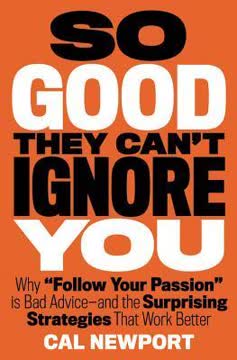Key Takeaways
1. Embrace the Architect-Entrepreneur Mindset
You must prioritize learning to be a businessperson over being an architect.
Shift in priorities. Transitioning from employee to business owner requires a fundamental shift in mindset. While design skills are essential, prioritizing business acumen is crucial for long-term survival and success. This means understanding finances, marketing, and client management.
Business over design. Sometimes, business decisions must take precedence over design preferences. For example, declining a low-budget project, even if it's creatively appealing, can free up resources for more profitable opportunities. This strategic approach ensures the business remains sustainable.
Amateur vs. Professional. There's a significant difference between practicing architecture as a hobby and running a professional firm. Professionals are committed to long-term success, understand legal implications, and dedicate time to running the business, not just designing.
2. Choose the Right Business Structure
At its heart, your business structure defines two basic things: how personal and business assets are treated (owned by you or your business) and your tax strategy.
Structure impacts liability and taxes. Selecting the appropriate business structure—sole proprietorship, partnership, LLC, or corporation—is a critical early decision. This choice determines how personal and business assets are treated and influences your tax strategy.
Sole Proprietorship vs. LLC. A sole proprietorship is simple to set up but offers no personal liability protection. An LLC provides limited liability, shielding personal assets from business debts and lawsuits, while offering pass-through taxation. Corporations offer the most protection but involve more complex setup and tax filings.
Seek professional advice. Due diligence is mandatory. Because your choice will have crucial personal and financial implications, your due diligence is mandatory. Consulting with a lawyer and a tax professional is essential to determine the best structure for your specific circumstances and long-term goals.
3. Define Your Brand Story
When you think of Apple Computer, you probably have an image formed in your mind of their brand...
Brand is more than a logo. Defining your brand is about articulating what your business stands for, its values, and its unique selling proposition. It's about creating a clear and consistent message that resonates with your target audience.
Develop a narrative. Craft a compelling brand story that explains your origin, your mission, and the problem you solve for your clients. This narrative should be easily communicated and memorable, setting you apart from competitors.
Ideal client avatar. Picture your ideal client. How does your firm specifically cater to the needs of that client? Whose problem does your business solve? Understanding their needs, desires, and values will help you tailor your brand message and marketing efforts effectively.
4. Market Your Unique Value
At its core the goal of marketing is to let people (your target market) know what you do (your unique selling proposition, or USP) and how you do it (your narrative).
Target market focus. Clearly define your target market to focus your marketing efforts. Understanding their demographics, values, and preferences will help you tailor your message and choose the most effective marketing channels.
Unique Selling Proposition (USP). What differentiates you from the competition? Identify your unique skills, experience, or approach that provides a better value to your clients. This could be expertise in sustainable design, historic renovations, or a specific project type.
Origin Story and Narrative. People are drawn to stories. Craft a compelling narrative that explains your journey, your values, and your commitment to solving your clients' problems. This story should resonate emotionally and create a lasting impression.
5. Master Internet Marketing Essentials
The Internet has opened the doors for architects and designers to practice globally.
Website is central. Your website is the most effective marketing tool, serving as the hub for all your online activities. It should showcase your portfolio, communicate your brand message, and provide clear calls to action.
Search Engine Optimization (SEO). Optimize your website for search engines to increase visibility. Use relevant keywords, create high-quality content, and build backlinks to improve your ranking in search results.
Email Marketing. Build an email list to nurture leads and stay connected with potential clients. Offer valuable content, such as guides or checklists, in exchange for email addresses, and use autoresponders to automate your communication.
6. Convert Leads into Clients
Clients are looking for someone they can get along with, someone who listens, and someone they can trust to manage their project.
Qualify leads effectively. Develop a system for qualifying leads to determine if they are a good fit for your business. This could involve a phone interview, an online questionnaire, or an automated prequalification process.
The Interview. The interview is your chance to personally introduce your brand and to connect with the lead. Use the interview to gather information, describe your process, and assess the chemistry between you and the potential client.
Follow-up and over deliver. After the interview, follow up promptly with a personalized email and a welcome package. This demonstrates your professionalism and commitment to providing exceptional service.
7. Craft a Solid Contract for Getting Paid
Getting your contract signed, in many states, is a legal precursor to beginning design work.
Contract is essential. A well-written contract protects both you and your client by clearly defining the scope of work, payment terms, and responsibilities. It's a legal requirement in many states and a crucial step in formalizing the relationship.
Fee structures. Choose a fee structure that aligns with your business goals and the project scope. Options include fixed fee, percentage of construction cost, hourly rate, and hybrid arrangements. Each has its advantages and disadvantages.
Seek legal advice. Consult with a construction law attorney to develop a contract that is tailored to your specific needs and protects your interests. The AIA offers standard contract documents that can serve as a starting point.
8. Manage Your Finances Wisely
If there isn’t a plan in place for covering your basic living expenses from the beginning, the inevitable lean times may force you out of business altogether.
Trim expenses and build a runway. Reduce personal expenses to extend your financial runway. Having savings to cover living expenses during the initial months is crucial for reducing stress and making sound business decisions.
Debt-free operation. Avoid taking on debt whenever possible. Loans can strain cash flow and limit your flexibility. Instead, focus on growing your business organically and reinvesting profits.
Accounting and Bookkeeping. Implement a system for tracking income and expenses. Use online accounting software or hire a professional to ensure accurate record-keeping and tax compliance.
9. Design a Studio That Reflects Your Brand
Think of your studio as an extension of your brand.
Location matters. The location of your studio—whether it's a home office, a coworking space, or a rented office—should align with your brand message and target audience. Consider the image you want to project and the impression you want to make on clients.
Dedicated space. Whether you work from home or rent an office, having a dedicated workspace is essential for focus and productivity. This space should be organized, well-equipped, and conducive to creative work.
Reference and Sample Libraries. Curate a collection of books, materials, and samples that inspire your work and showcase your expertise. These resources can be valuable tools for client meetings and design development.
10. Minimize Startup Costs with a Lean Approach
The lean start-up methodology is the path I think you should take because it looks for ways to avoid spending cash on things that aren’t important.
Minimum Viable Product (MVP). Focus on building a minimum viable product—a basic version of your business that allows you to start earning revenue quickly. Avoid unnecessary expenses and prioritize essential tools and resources.
Repurpose and reuse. Repurpose existing equipment and furniture whenever possible. Look for affordable options at thrift stores or online marketplaces. Avoid purchasing expensive items until they are absolutely necessary.
Outsource and automate. Outsource tasks that are not core to your business, such as bookkeeping or administrative work. Automate processes whenever possible to save time and money.
11. Implement Standard Operating Procedures (SOPs)
SOP documents precisely define the set of steps necessary to complete a task given a specific cue...
Consistency and efficiency. Standard Operating Procedures (SOPs) are documented processes that ensure consistency and efficiency in your business operations. They provide a framework for handling routine tasks and client interactions.
Communication SOP. Develop a communication SOP to ensure timely, open, and transparent communication with clients. This should include guidelines for responding to inquiries, providing project updates, and addressing concerns.
Client Onboarding SOP. Create a client onboarding SOP to streamline the process of welcoming new clients and setting expectations. This should include steps for contract signing, payment collection, and project kickoff.
Last updated:
Review Summary
Architect and Entrepreneur receives mostly positive reviews, with readers praising its practical advice for starting an architecture business. Many appreciate the step-by-step guidance, marketing strategies, and business models presented. Readers find the author's honesty and transparency valuable, especially regarding topics often overlooked in architectural education. Some criticize the book for lacking depth or being too focused on selling other resources. Overall, it's considered a useful toolkit for aspiring architectural entrepreneurs, particularly those interested in residential design.
Similar Books









Download PDF
Download EPUB
.epub digital book format is ideal for reading ebooks on phones, tablets, and e-readers.




